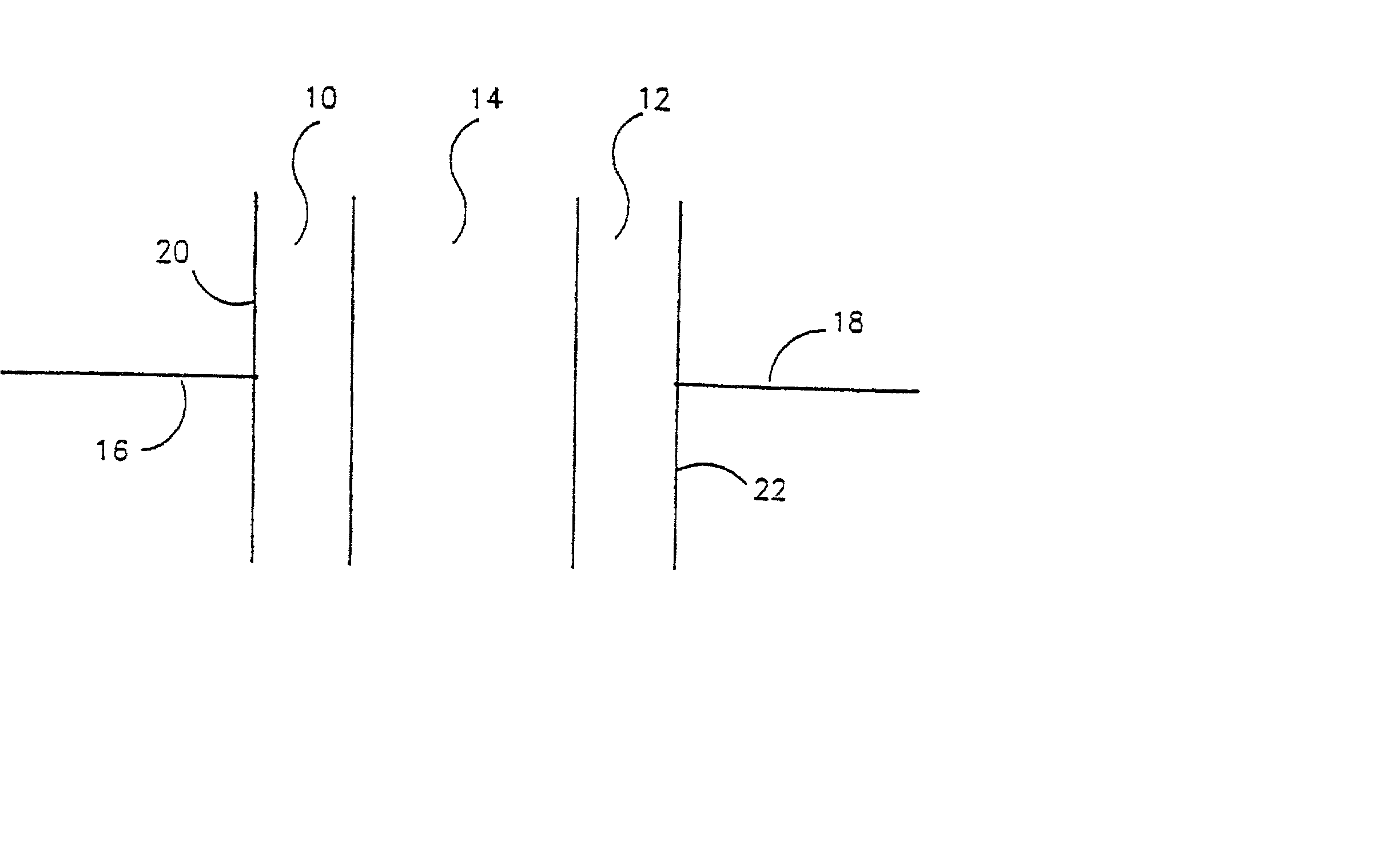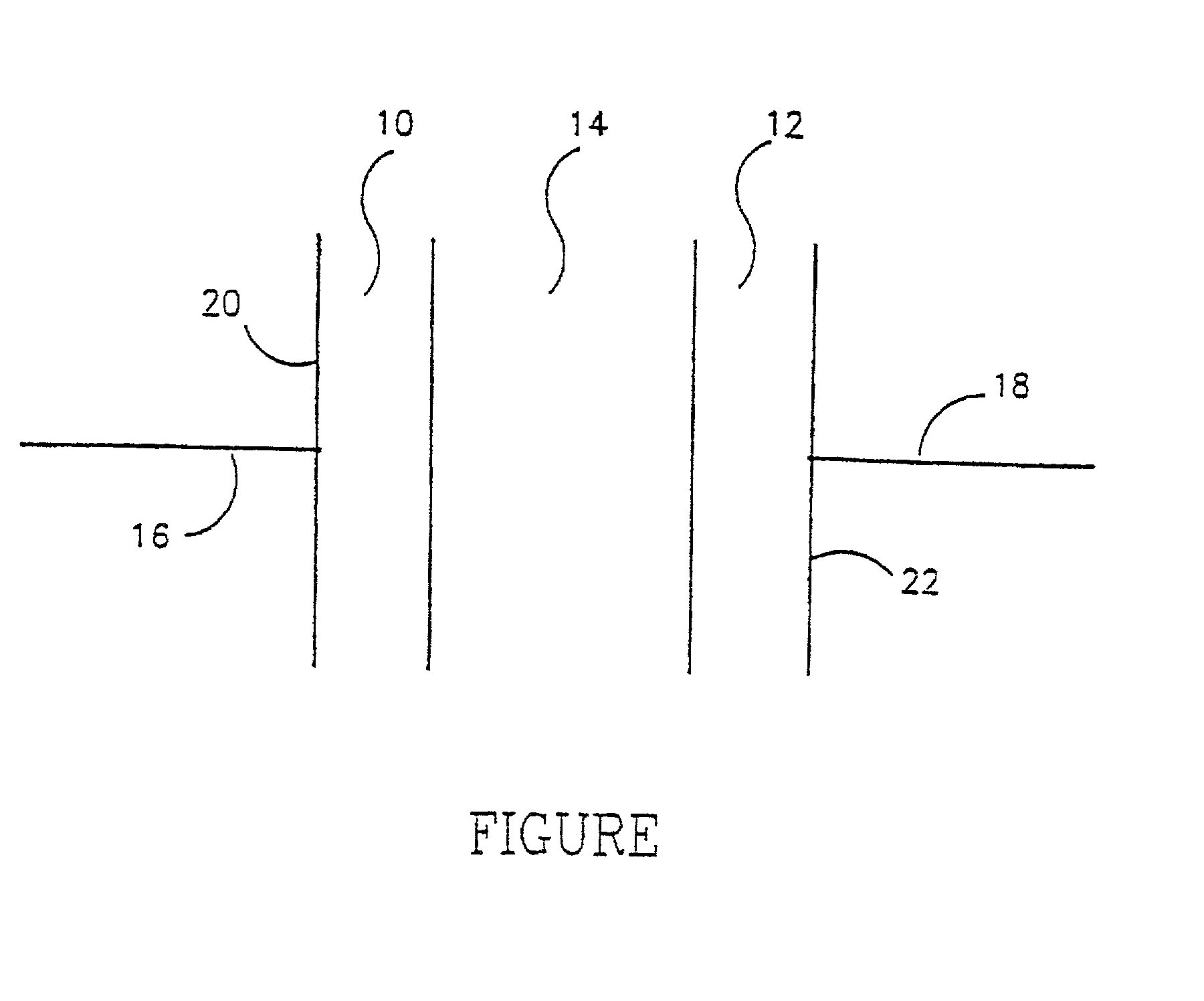Electrochemical cell with a non-liquid electrolyte
- Summary
- Abstract
- Description
- Claims
- Application Information
AI Technical Summary
Benefits of technology
Problems solved by technology
Method used
Image
Examples
example 2
[0130] A three cell bipolar battery was constructed using the same procedure as in Example 1. The anode mix (A-2-M) consisted of 350 mg A-1 mixed with 150 mg of MPA. Thus, the A-2-M mix contained by weight 56% HQ, 14% graphite and 30% MPA.
[0131] The cathode mix (C-2-M) consisted of 350 mg of C-1 mixed with 150 mg of MPA. Thus the C-2-N mix consisted by weight of 63% MnO.sub.2, 7% graphite and 30% MPA. The order of the construction was the same as in Example 1. After the graphite sheet had been placed on top of the C-2-M mix, the order was repeated twice more in order to build a three cell battery in the plastic die. The graphite sheets between the cells acted as a bipolar current collector.
[0132] The open circuit voltage of the battery was +1.66 volts, or +0.553 volts per cell. This battery was discharged and charged as in Example 1.
example 3
[0133] This example illustrates how anodes can be prepared as inks and then painted onto the solid electrolyte. Poly-vinyl alcohol was dissolve in an aqueous solution, carbon powder was added, and the mixture was blended by high speed stirring. Then chloranilic acid was added to this mixture and blended in by further high speed stirring.
[0134] The ink thus prepared was painted onto the solid electrolyte and allowed to air dry. The cathode ink from Example 4 below was painted onto the other side of the solid electrolyte and allowed to dry.
[0135] The resulting cell cycled a number of times showing representative battery action. For one ordinarily skilled in the art it is clear that one can also paint the electrodes onto the cell current collectors and then sandwich the solid electrolyte between them in order to form a battery cell.
example 4
[0136] This example illustrates how cathodes can be prepared as inks and then painted onto the solid electrolyte. Poly-vinyl alcohol was dissolve in an aqueous solution, carbon powder was added to the solution and the mixture was blended by high speed stirring. Then manganese sulphate was added to this mixture and blended in by further high speed stirring. For use of this ink for construction of a battery please refer to Example 3 above.
PUM
 Login to View More
Login to View More Abstract
Description
Claims
Application Information
 Login to View More
Login to View More - R&D
- Intellectual Property
- Life Sciences
- Materials
- Tech Scout
- Unparalleled Data Quality
- Higher Quality Content
- 60% Fewer Hallucinations
Browse by: Latest US Patents, China's latest patents, Technical Efficacy Thesaurus, Application Domain, Technology Topic, Popular Technical Reports.
© 2025 PatSnap. All rights reserved.Legal|Privacy policy|Modern Slavery Act Transparency Statement|Sitemap|About US| Contact US: help@patsnap.com


